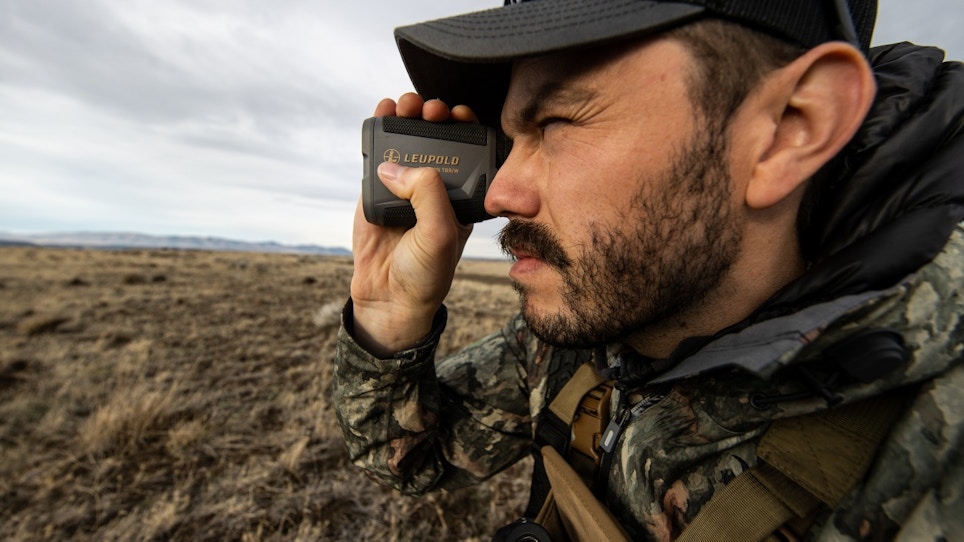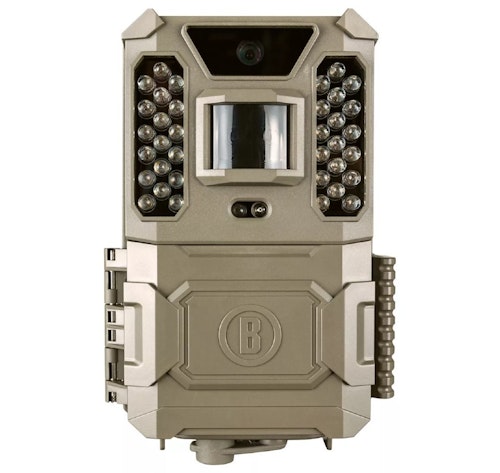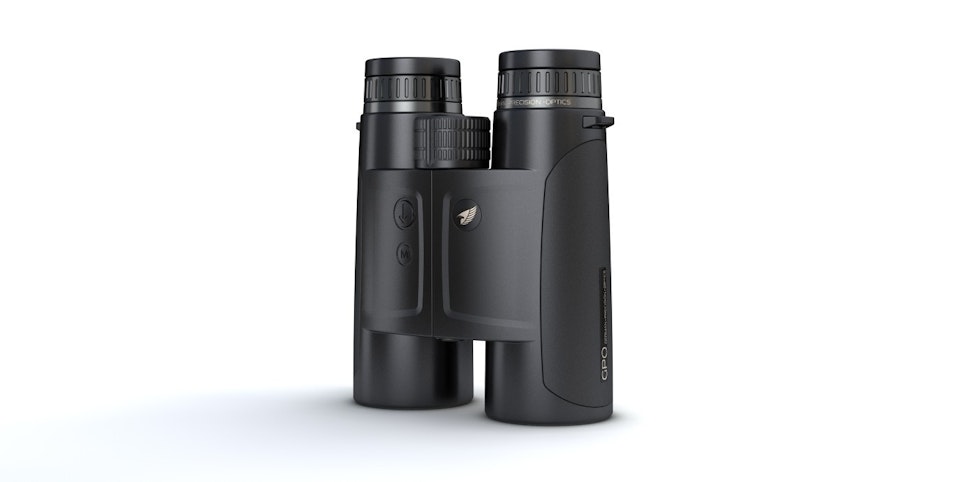New hunters today can hardly believe that a mere three decades ago, bowhunters regularly stepped off distances from their tree stands and put rocks or limbs at 20, 30 and 40 yards so they could know the exact distance when a whitetail came past their stand. Likewise, rifle hunters were sorely limited on the distance of their shots, since unless they had a highly trained eye, knowing whether a deer was 300 yards or 400 yards was virtually impossible.
Then came the laser rangefinder — one of the tools that I believe really did revolutionize modern hunting for archers, rifle hunters and even those who use muzzleloading firearms. Suddenly a bowhunter could tell that a deer was 37 yards away, or a rifle hunter knew for certain his elk was at 243 yards. The result was more clean kills — and that’s always a good thing when it comes to hunting.
After the first introductions, many improvements followed, including brighter LED readouts, rain modes so the laser beam could penetrate precipitation, and scan modes for quick readings on moving targets. More recently, rangefinders began featuring internal computers and angle meters that can instantly compensate for upward/downward shooting angles — another great advancement.
I still have and frequently use the very first one-handed model made by Bushnell nearly 30 years ago, and it still works well for my ranging needs. Obviously, it doesn’t have the extended range, ultra-clear glass and some other advanced features that more modern rangefinders have, but it still does the job quite well. However, now and then when I look at the new models — and notice their features and reasonable price tags — I begin to yearn for one of these lightweight, sleek new rangefinders that can get me within a few yards on a target a mile away. Maybe 2021 will be the year I break down and get one.
Laser rangefinders are available from many companies with a wide variety of features. Let’s take a look at three models you would do well to carry in your inventory.
Bushnell Prime 1300 Laser Rangefinder
The original name in hunting rangefinders, Bushnell still makes many fine models, including some that are made specifically for golfers — another game in which knowing the distance to your target is paramount. The company’s Prime 1300 Laser Rangefinder is one of the best combinations of features and value currently on the hunting market.
Featuring an all-glass optical system and an improved LCD Display, the Prime 1300 offers up to a two-times-brighter viewing experience than past models. By providing enhanced light transmission for a brighter, clearer image, this laser rangefinder can extend a hunter’s vision when it matters most — at dawn and dusk. Ideal for bowhunters, the Prime 1300 utilizes ARC technology, which assists archery shooters in determining their exact distance to the target, even when hunting out of a tree stand.
The additional brightness increase is partly a function of the objective lens used in the Prime 1300. The 40-percent-larger objective lens, paired with an all-glass optical system, brings more light to the user’s eye for a brighter image, even in low-light conditions.
Truth be told, most people don’t need a rangefinder that will range animals out to a mile or more. The 1300 will fit most people’s needs nicely with its ability to range 1,300 yards for reflective targets, 800 yards for trees and 600 yards for game animals — much farther than most deer hunters prefer to shoot.
The Prime 1300 even has a choice of reticles that can easily be changed in the field. Hunters can choose between circle/dot, dot only or circle only.
The best thing: This feature-packed little unit retails for around $150. That’s a lot less than the first Bushnell unit I bought decades ago.
Leupold RX 1400I TBR/W Rangefinder
Leupold is a name synonymous with quality glass in the hunting industry, so you might be surprised that the company makes some of its extremely high-quality rangefinders available at a very attractive price for hunters.
The Leupold RX 1400I TBR/W Rangefinder is one such unit. Leupold claims the model is the most versatile, feature-rich rangefinder in its class, and that’s a hard claim to argue against.
Equipped with Leupold’s proprietary ranging engine, the RX gives lightning-fast readings through an exceptionally bright red display. Additionally, ballistically calculated ranges keep hunters on target even for the most extreme uphill and downhill shots. Plus, the unit’s lightweight, polymer housing is extremely tough, meeting the needs of those hunters we all know who are notoriously rough on their equipment.
At only 4 inches long, 1.4 inches high and 3 inches wide, the diminutive rangefinder weighs in at just over 5 ounces. In fact, if you have a problem with this unit, it will likely be misplacing it because of its compact nature. The RX1400I TBR/W rangefinder runs off a single CR2 battery, with a battery life of about 3,000 actuations. Magnification of the unit is 5-power.
Max ranging distances are 1,400 yards on reflective targets, 1,200 yards on trees and 950 on big-game animals. And for bowhunters, the unit can range distances as close as 6 yards.
At about $200, the RX1400I TBR/W is a lot of bang for your customer’s buck from a top name in quality outdoor optics.
GPO 10x50 Rangeguide
We’re admittedly getting away from budget-minded hunters here, but the increasing popularity of combination binocular/rangefinder units cannot be denied. One of the reasons for their popularity is the convenience that such units provide to hunters, many of whom are quite willing to pay big bucks for very high-quality glass that can mean the difference between success and failure.
If you’re not familiar with German Precision Optics, you should be. GPO was founded on the premise that design, engineering and quality management is 100 percent controlled in Germany to its strictest standards, yet products can be produced at some of the largest production facilities around the world. And this combo bino/rangefinder is a great example of the company’s quality products.
GPO’s RangeGuide 10x50 binocular boasts exceptional edge-to-edge clarity as well as precise ranging on reflective targets out to nearly 1.75 miles. Standing just 6.3 inches tall, it simply looks like just a compact 10x50 binocular. But it lives up to its 22.36 twilight factor, and it actually can accurately range targets out to 3,062 yards with inclination/declination compensation, all while tipping the scales at a mere 35 ounces. The magnesium frame is to thank for much of the light weight.
Coupled with the GPObright high-transmission lens coatings, the RangeGuide’s double-HD laminated 50mm objective lenses are exceptionally beneficial for transmitting light in the twilight hours. The RangeGuide also features diopter focus adjustments on both left and right sides and utilizes GPO’s premium cut-brass-geared focus-wheel system for a very tight, consistent turning radius without any free play.
This unit retails for north of $1,500, but so do most top-quality binoculars without rangefinding ability. That makes this a good buy for discerning hunters who want to limit the amount of gear they carry but still have the best available.
Wrapping Up
If you aren’t up to date on the latest laser rangefinders and aren’t carrying a few models for your hunting customers, you might be missing out on some profitable sales. With cool new models introduced every year, even old guys like me want a new rangefinder every once in a while!









